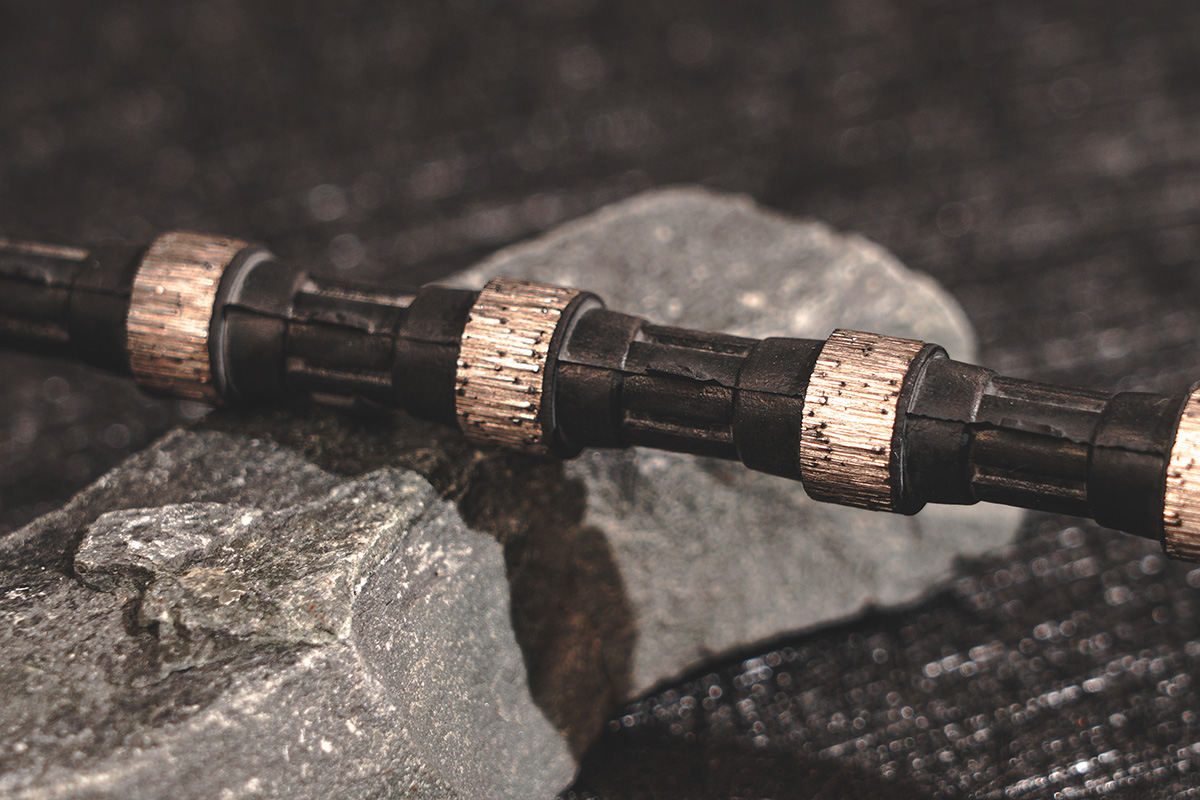Diamond wire saw static cutting is a process method that uses diamond wire saw for material cutting. It uses a diamond wire saw as a cutting tool, and by fixing the saw blade and applying an appropriate force, the saw blade is in contact with the material to be cut and cut in a static state.
The working principle of diamond wire saw static cutting is to use the steel wire embedded with diamond particles in the diamond wire saw to cut the material through friction and grinding. During static cutting, the saw blade does not make a propulsive motion, but force or gravity is applied to bring the saw blade into contact with the material and the cut is made.

Static cutting is suitable for a variety of hard materials including stone, concrete, ceramics, glass and more. Its advantage is that the cutting process is relatively stable, the cutting precision is high, and it can realize thinner cutting lines and complex shape cutting. In addition, static cutting can also reduce vibration and noise during cutting, making cutting more stable.
Diamond wire saw static cutting is often used in fields such as construction, mining, stone processing and demolition engineering, and is very suitable for cutting materials that require high-precision, flat cutting or special shapes.
Diamond wire saw static cutting has the following advantages:
1: High-precision cutting: Static cutting can achieve high cutting precision, and can cut fine lines and complex shapes to meet the needs of high-precision cutting.
2: Smooth cutting process: Since static cutting does not require propulsion movement, the cutting process is relatively stable, which can reduce vibration and noise and provide a smooth cutting experience.
3: Adapt to a variety of materials: Diamond wire saw static cutting is suitable for a variety of hard materials, including stone, concrete, ceramics, glass, etc. Whether it is natural stone or man-made materials, it can be effectively cut.
4: Flexibility and controllability: Static cutting can apply appropriate cutting force according to needs, and has good controllability. Operators can adjust according to material characteristics and cutting requirements to achieve the best cutting effect.
5: High efficiency and energy saving: Compared with other cutting methods, static cutting consumes less energy. Energy consumption is saved and cutting efficiency is improved because no additional propulsion movement is required.
6: Suitable for complex shape cutting: Diamond wire saw static cutting can cut various complex shapes according to needs, including curves, arcs, internal and external shapes, etc., to meet special cutting needs.
In general, diamond wire saw static cutting has obvious advantages in cutting accuracy, stability, adaptability and controllability. It is an efficient and precise cutting method, widely used in construction, mining, stone processing and areas such as demolition.
At present, the difficulties of static cutting mainly include the following aspects:
1: Cutting speed limitation: Compared with other cutting methods, the cutting speed of static cutting is slower. Since the static cutting does not rely on the propulsion movement, the cutting speed is limited by the cutting force and the performance of the cutting tool, so high-speed cutting cannot be achieved.
2: Cutting depth limitation: Static cutting also has certain limitations in cutting depth. Since static cutting does not have active propulsion capability, the cutting depth is limited by the length and rigidity of the cutting tool, and other auxiliary means are required for deep cutting.
3: Durability of cutting tools: Static cutting has high requirements for cutting tools, and it is necessary to use high-strength, high-wear-resistant diamond wire saws and other cutting tools. Since the cutting tool is subjected to high pressure and friction during the cutting process, it is easy to wear and fatigue, and needs to be replaced and maintained frequently.
4: Cutting surface quality: Static cutting may cause rough cutting surface or burrs when cutting some materials, which will affect the cutting quality. Especially for some hard and brittle materials, such as glass and ceramics, cracks and chipping of the cutting surface are prone to occur.
5: Cooling and cleaning during cutting: Since there is no active device for cooling and cleaning in static cutting, the long-term cutting process may cause the temperature in the cutting area to rise and the cutting chips to accumulate, and other measures are required for cooling and cleaning.
These difficulties have brought certain challenges to the application and effect of static cutting. It is necessary to continuously improve and optimize cutting tools, cutting parameters and cutting processes to improve the efficiency and quality of static cutting.








